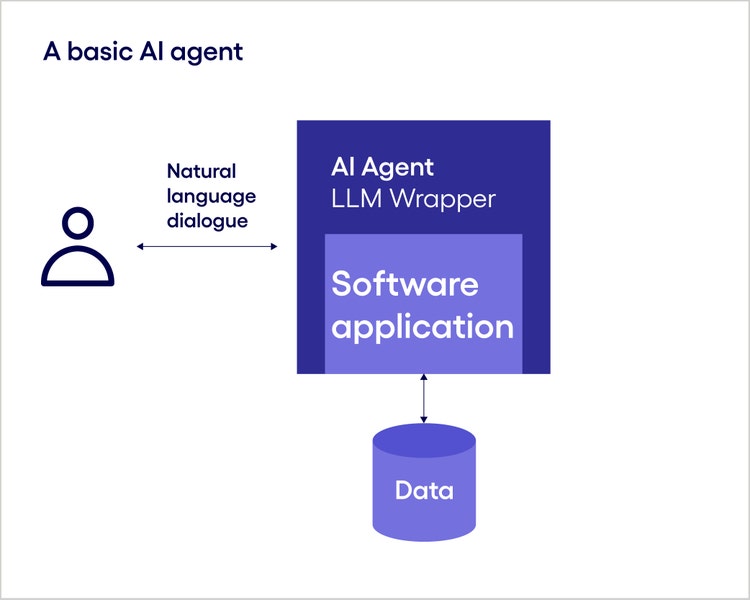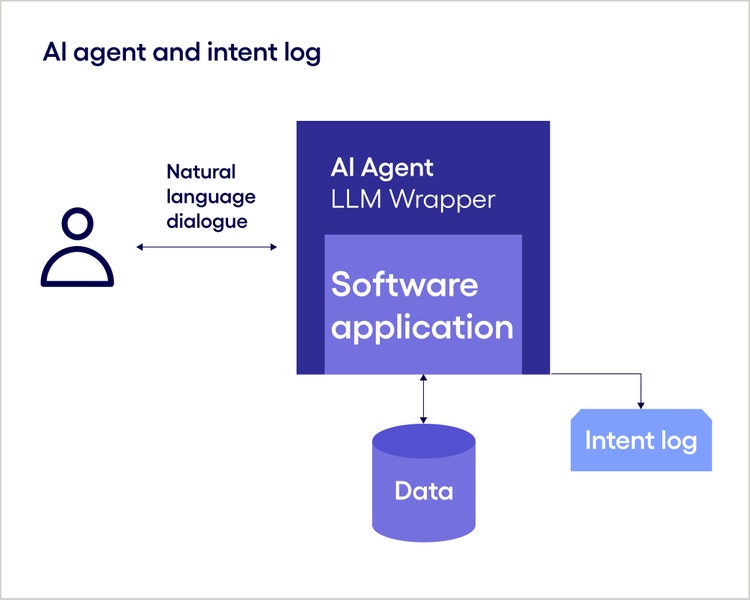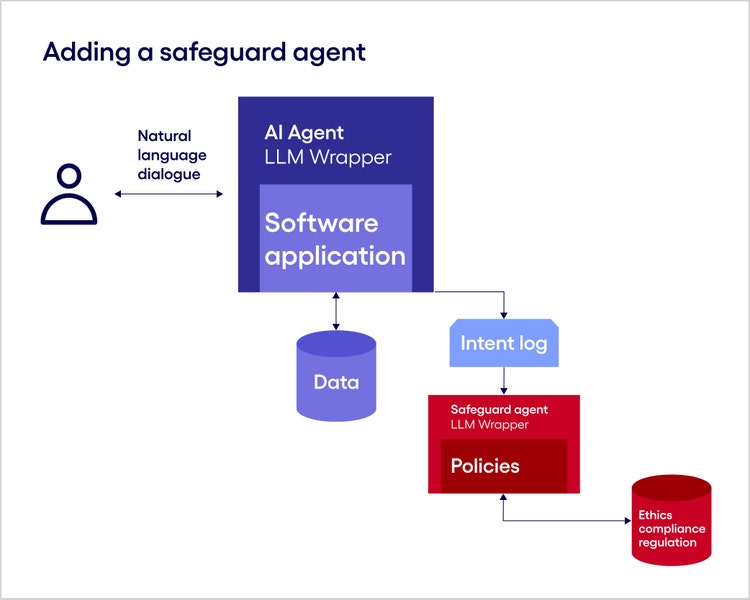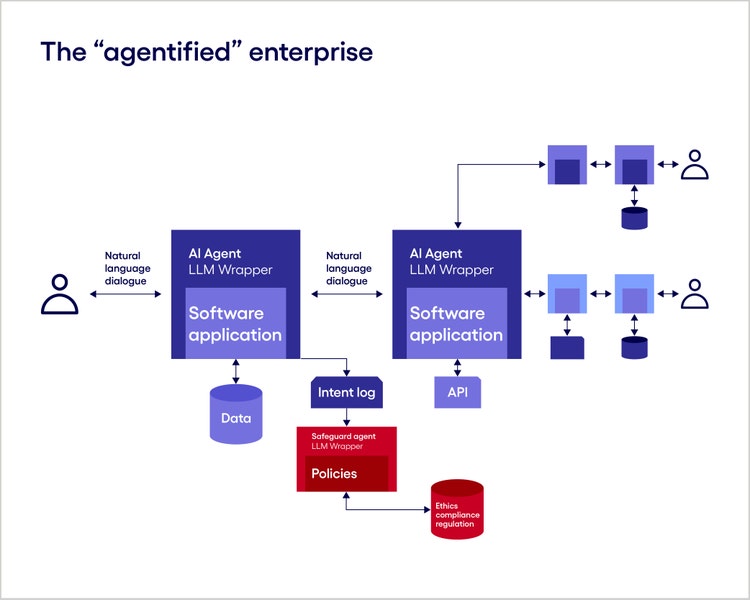<p><br> <span class="small">August 07, 2024</span></p>
Multi-agent AI is set to revolutionize enterprise operations
<p><b>AI agents that interact not only with humans but independently among themselves are already transforming business operations—and multi-agent AI's potential is just beginning to be realized.</b></p>
<p>Why would a company want to link its HR system with its supply chain? How does procurement relate to sustainability goals and emissions tracking? What does product development have to do with CRM?</p> <p>Enterprises are ecosystems—living, responsive environments that evolve and change as a result of internal and external factors. So, to address all three of our questions: Supply chain delays can affect distribution center staffing. Onboarding a new vendor can impact Scope 3 emissions. Customer turnover could indicate product deficiencies.</p> <p>The problem is that even though business objectives, activities, and metrics are deeply interwoven, the software systems used by disparate teams are not. A company’s HR system cannot “talk” to its supply chain. Procurement is not connected to sustainability. CRM has no lifeline to product development. Because these systems operate in silos, actions are often based on insights drawn from merely one program, and the output is applied to merely one function.</p> <p>But what if those systems could interact with each other? What if the metaphorical well of information did not correspond to a single software system, but to the enterprise as a whole? What if the recommended actions produced by one system did not apply to that function alone—but to all areas of the business that would be impacted?</p> <p>This is the premise and the promise of multi-agent artificial intelligence systems. By consolidating business operations under a single interface powered by AI agents, businesses can improve efficiency and quality. The technology’s transformative potential is huge, and some businesses have already begun to leverage it.<br> </p>
<h4>Multi-agent AI: concept and definitions</h4> <p>The concept of multi-agent AI systems is not exactly new. In fact, as I wrote in a <a href="https://onlinelibrary.wiley.com/doi/10.1002/aaai.12170" target="_blank" rel="noopener noreferrer">recent article for AI Magazine</a>, in many ways the discussion has come full circle since the 1980s, when many technologists sought to create a single, artificially intelligent software entity. Ultimately, those early models failed due to insufficient computing power, lack of labeled data, and inadequate algorithms. But now the emergence of generative AI, executed alongside the natural language capabilities of large language models (LLMs), has breathed new life into the concept.</p> <p>Though technically not the single intelligent software entity many aimed for in the ’80s and ’90s, a multi-agent AI system is, in many ways, the modern manifestation of that original idea.</p> <p>A multi-agent AI system<b> </b>is a network of extremely powerful and intelligent AI tools, including LLMs, built into software systems. This system of systems provides a way for AI agents—generative AI LLMs wrapped around any software, function, module, or app—to interact with one another.</p> <p>While all the agents in such a system use the same LLM as the “wrapper,” each has a different LLM-generated system prompt defining its role. The agents function as a virtual working group, analyzing prompts and drawing information from across the business to produce a comprehensive solution not just for the original requestor, but potentially for other teams as well.</p> <p>For example, consider a multi-agent AI system in manufacturing. In this case, a Sourcing Agent could analyze existing processes and recommend alternative components that would be more cost-effective based on seasons and demand. This Sourcing Agent could then connect with a Sustainability Agent to determine how the change would impact environmental goals, such as emissions. Finally, a Regulatory Agent would oversee compliance activity, ensuring teams submit complete, up-to-date reports on time.</p> <p>On the HR front, AI agents could help streamline employee onboarding, connecting, and managing disparate HR, IT, and admin workflows. For instance, a Hiring Agent could submit an offer and once signed, hand off the process to an Onboarding Agent, which could gather paperwork, check documentation, and schedule orientation. These HR Agents could also trigger workflows with IT Agents to perform such tasks as assigning devices and configuring systems for new employees.</p> <p>An interesting application area for multi-agent systems is Enterprise Resource Planning (ERP). Cross functional output between functions and decision support is the premise of an ERP system which integrates various functional groups in an organization. While traditional ERP systems are designed specifically for business processes, multiagent AI systems are more general-purpose but can be adapted for ERP-like functions too. What LLM-based multi-agent systems can bring to ERP is the ability to handle unstructured data and more flexible, adaptive processes. ERP systems primarily execute predefined processes, and AI agents could potentially make more complex, autonomous decisions.</p> <p>This is the world of multi-agent AI. And it could affect businesses across industries sooner than you think.<br> </p>
<h4>The business impact of agent-based AI</h4> <p>OpenAI CEO Sam Altman recently said agents are poised to become “<a href="https://www.technologyreview.com/2024/05/02/1092004/the-download-sam-altman-on-ais-killer-function-and-the-problem-with-ethanol/" target="_blank" rel="noopener noreferrer">AI’s killer function</a>,” Adding that the technology has the potential to be “a super-competent colleague.”</p> <p>To me, the term “killer function” also suggests an element of stealth. The shift to multi-agent systems has already begun, albeit quietly.</p> <p>Many businesses are organically integrating LLM-powered chatbots into their intranets for employee use. Simultaneously, departments like HR, Finance, Legal, and IT are adding AI-enabled chatbots to their specific applications. Unfortunately, the result can be clunky; employees who make inquiries through the top-level intranet chatbot must often repeat their queries to department-specific tools.</p> <p>That is a problem; LLM-powered chatbots are and should be expected to coordinate and provide a unified response—it is the foundational ideal of a multi-agent system.</p> <p>It is worth noting that tech leaders are eager to accelerate exploration of this concept. <a href="https://www.techrepublic.com/article/gartner-it-spending-2024/" target="_blank" rel="noopener noreferrer">Gartner recently found</a> that global business spending on IT services will reach $1.52 trillion this year, a marked increase driven largely by gen AI programs and planning.</p> <p>Given the tight tech talent market, expansion of AI programs is leading to a surge in spending on consulting services, with Gartner revealing that enterprises have allocated more to external resources than internal ones for the first time. This implies that companies are doing everything it takes to expand their AI programs and secure the maximum benefits.<br> <br> </p>
<h4>How multi-agent AI works</h4> <p>To fully appreciate the value of multi-agent AI, it is essential to understand how the system and its individual components function.</p> <p>As discussed above, an AI agent is a generative AI LLM wrapped around a module, function, service, or database that allows people to interact with that functionality in natural language, much as they do with tools like ChatGPT (see Figure 1).</p>

#
<p><span class="small">Figure 1: An AI Agent.</span></p> <p>Because a multi-agent architecture can expand, the system could evolve to include an Intent Log (see Figure 2) corresponding to user requests. Because the system understands the context and can describe each step in natural language, this tool can record what the agent has done and why.</p> <p>This feature accelerates technology adoption by enhancing trust and transparency. Users can see how the system generates recommendations and the factors involved in natural language. This is crucial for experienced professionals who might be skeptical of AI-generated suggestions that seem misaligned with their own, often based on limited information.</p>

#
<p><span class="small">Figure 2: An Intent Log can help maintain compliance.</span></p> <p>The expandable architecture also enables the introduction of safeguards on the agent’s behavior by having it observed by what we will call a Safeguard Agent (see Figure 3). This agent acts as a moderator, raising flags and informing a human when policies or standards are violated. The agent can also prevent a response from happening.</p> <p>For example, the Safeguard Agent can help foster ethical use by ensuring policies are adhered to and regulations are observed. It can also be programmed to intervene if a user asks the system to operate in a way that is non-compliant. Further, it can check to ensure it is working with trustworthy data, thereby reducing hallucinations and upholding data privacy and security.</p>

#
<p><span class="small"> Figure 3: A Safeguard Agent can help improve trust and transparency.</span></p> <p>Taking this example further, let us say our application includes a microservice (in addition to the database) to handle user queries or commands more effectively. In this case, the system can either prompt the user to work with a separate agent for that service or have the first agent collaborate directly with another agent on behalf of the user.</p> <p>To achieve this, the original agent serving the user must be made aware of the agent handling the microservice. They can communicate directly to fulfill user queries, capturing the intent and adapting to changes in the format and syntax of specific calls to the underlying services. Even when the two agents are engaged with one another, they do so using natural language, which helps maintain transparency.</p> <p>Before you know it, an enterprise’s entire software and applications can be “agentified” in this way (see Figure 4).</p>

#
<p><span class="small">Figure 4: An “agentified” business.<br> <br> </span></p>
<h4>The benefits of multi-agent AI</h4> <p>Migrating a software/application stack to an agent-based architecture offers several distinct advantages over traditional IT approaches, as described below.</p> <ul> <li><b>Ethics, transparency, and security<br> <br> </b><ul> <li><b>Intent logging</b>: Each agent can log its intent for every transaction or service call it makes, enhancing transparency and traceability.</li> <li><b>Safeguard agents</b>: Incorporating agents that monitor and check the behavior of other agents ensures compliance with responsible AI practices and ethical standards.</li> <li><b>Enhanced security</b>: Security measures can be embedded within individual agents, providing a more granular approach to security management.<br> </li> </ul> </li> <li><b>Flexibility and scalability<br> <br> </b><ul> <li><b>Modularity</b>: Agent-based systems are highly modular, allowing for easier updates and maintenance. Each agent can be independently developed, deployed, and scaled without affecting the system.</li> <li><b>Customizability and extensibility</b>: New agents can be added, or existing ones modified with minimal disruption, allowing for continuous improvement and adaptation to new requirements.<br> </li> </ul> </li> <li><b>Reliability<br> <br> </b><ul> <li><b>Enhanced fault tolerance</b>: The failure of one agent does not necessarily disrupt the entire system. Agents can be designed to handle failures gracefully, improving overall system reliability.<br> </li> </ul> </li> <li><b>Efficiency and waste reduction<br> <br> </b><ul> <li><b>Autonomy and specialization</b>: Each agent can specialize in a specific task, leading to more efficient and optimized execution of functions within the application stack.</li> <li><b>Improved data handling</b>: Agents can handle data locally and only communicate relevant information, reducing data transfer costs and improving performance.</li> <li><b>Better resource management</b>: Agents can optimize resource usage by adjusting operations based on current system states and workloads.<br> </li> </ul> </li> <li><b>Enhanced user experience<br> <br> </b><ul> <li><b>Robust inter-agent communication</b>: Agent communications are intent-based and often in natural language, making interactions more understandable and simplifying integration.</li> <li><b>Interoperability</b>: Agents can interact with diverse systems and services, providing a unified interface and facilitating integration across different platforms and technologies.<br> </li> </ul> </li> </ul>
<h4>Seizing the opportunity: a multi-agent future</h4> <p>While many companies have begun their journey to multi-agent software organically, they need to be intentional about how they continue. Care must be taken as to the granularity of agentification, the types of LLMs being used, and when and how to fine-tune them to make them effective.</p> <p>Further, not every application may be a prime candidate for agentification. A fully autonomous agent-based goal, while noble, is, in most cases, not practical due to technology and social considerations. Organizations should therefore start from the top, consider the needs and goals of the organization, and work down from there to decide what can be agentified.</p> <p>This would involve outlining the roles and communications of the various players in various organizational workflows, then exploring how they could be augmented with LLM-based agents. There is a subtle difference between this approach and completely rethinking an organization's structure and processes to make it entirely autonomous and as efficient as possible.</p> <p>We should also be mindful of the fact that agentification is happening within an organization that is already operational; in most cases, agents should be incorporated incrementally. The human-based organization will have to endorse, trust, and adopt agents in day-to-day work.</p> <p>If this process is handled well, the organization should gradually become more efficient and its employees happier, and the impact of agentification can be measured via the same KPIs the organization currently uses.<br> </p>
<p>Babak Hodjat is CTO of AI at Cognizant and former co-founder & CEO of Sentient. He is responsible for the technology behind the world’s largest distributed AI system and was the founder of the world's first AI-driven hedge fund.</p>
<p>Ravi Kumar S was appointed CEO of Cognizant in January 2023. In his role as CEO, Ravi sets the strategic direction of the company, promotes Cognizant’s client-first culture, and focuses on ensuring sustainable growth and driving long-term shareholder value.</p>
<p>Naveen Sharma is SVP of Cognizant’s AI & Analytics business. He blends strategic vision with tactical execution and is focused on driving growth via thought leadership, innovation, pre-sales, offering development and portfolio management.</p>




